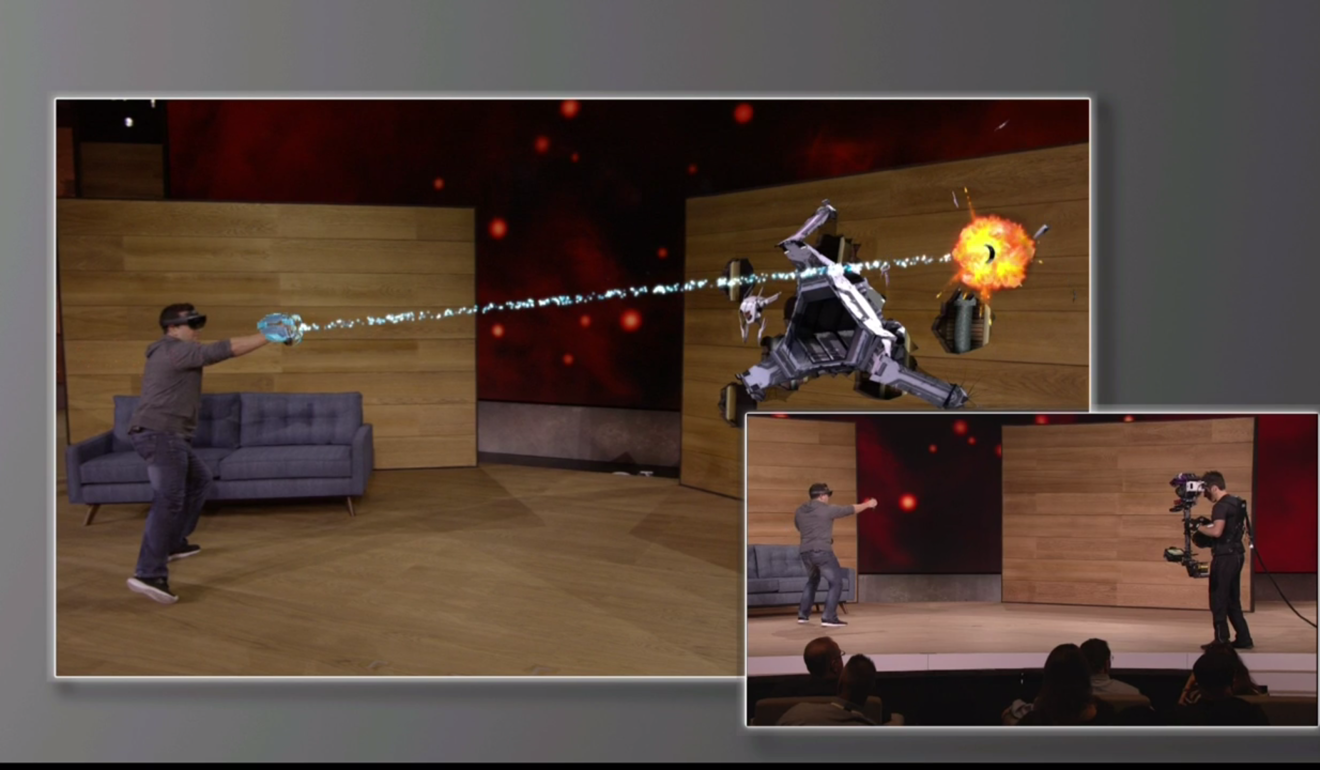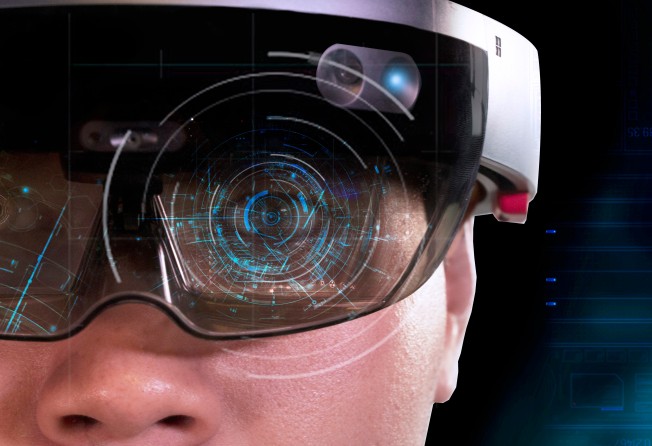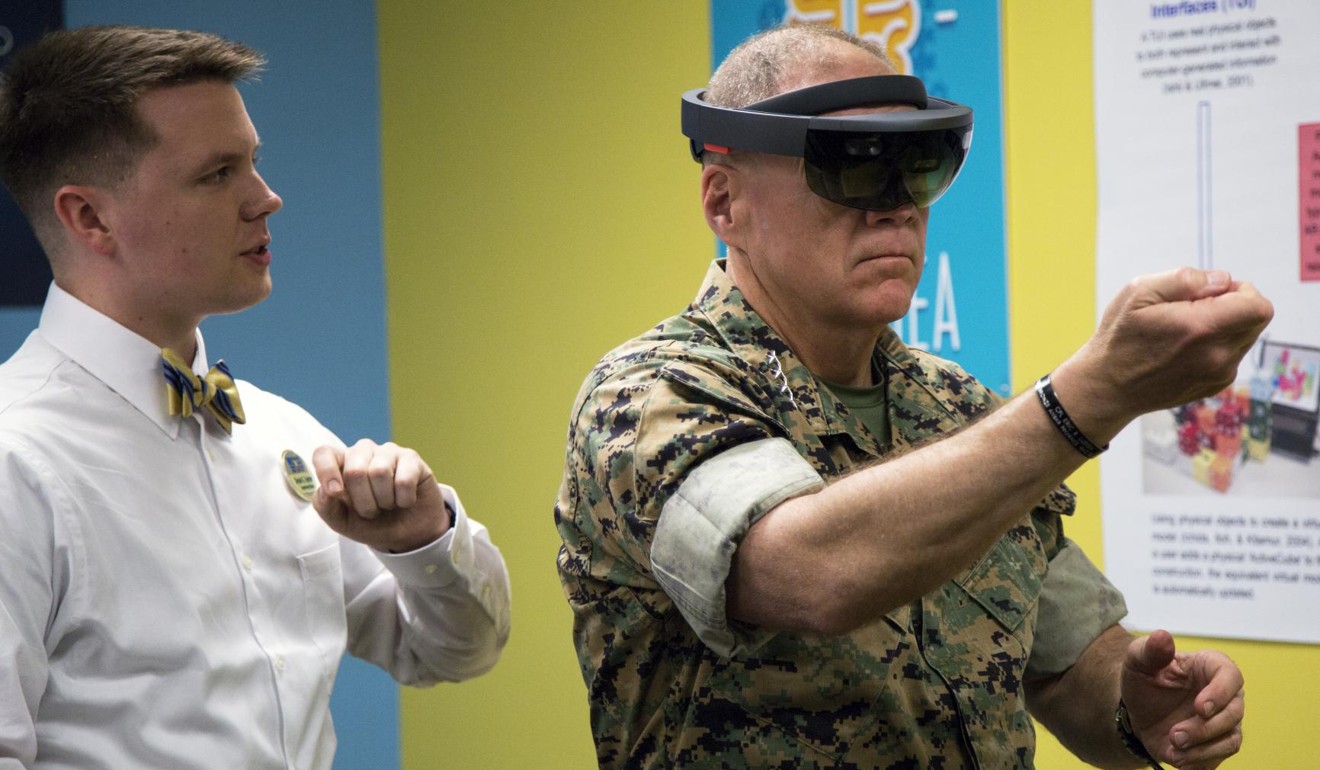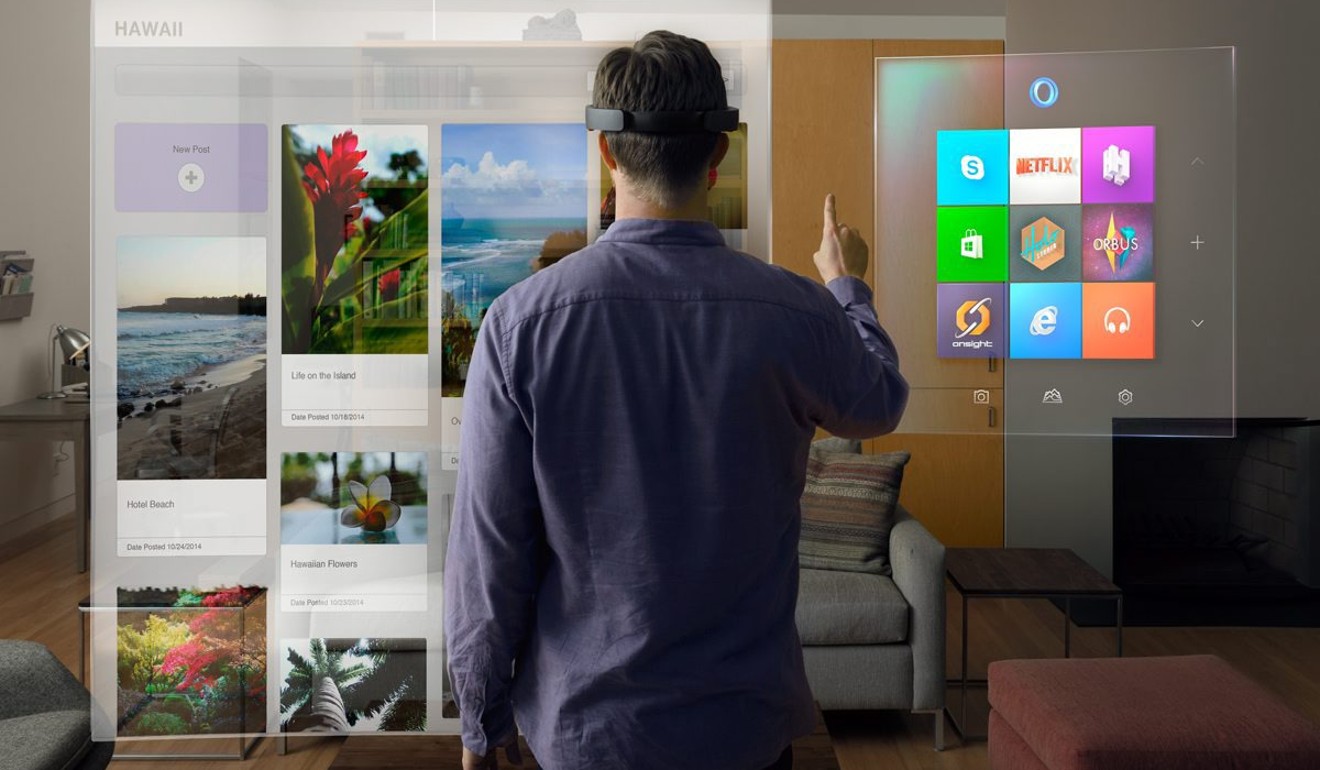
Microsoft workers call for end to Pentagon contract that could turn warfare into a ‘video game’
- ‘We believe that Microsoft must stop in its activities to empower the US Army’s ability to cause harm and violence,’ staff wrote in a letter to management

Employees at Microsoft on Friday demanded the company cancel a contract to supply its augmented-reality headsets to the US Army, warning in a letter that putting HoloLens in the military’s hands could “help people kill”.
Writing to chief executive Satya Nadella, more than 50 workers said the devices would be “turning warfare into a simulated ‘video game’”. They also urged Microsoft, which won the US$480 million contract in November, to “cease developing any and all weapons technologies” for the government.

“As employees and shareholders we do not want to become war profiteers,” the letter concluded. “To that end, we believe that Microsoft must stop in its activities to empower the US Army’s ability to cause harm and violence.”
Spokespeople for Microsoft and the US Army did not immediately respond to requests for comment. A Microsoft employee who helped draft the letter spoke on condition of anonymity out of concerns about retribution.
Microsoft has struggled to balance its relationship with the Department of Defence against its employees’ ethical and policy qualms about working with the US government.

Last year, after workers petitioned the company to cancel a cloud-computing and artificial-intelligence contract with the US Immigration and Customs Enforcement, Microsoft said it would allow employees to change positions within the company if they found their existing roles betrayed their values. But Brad Smith, president of Microsoft, has said the company would not cease working altogether with the Department of Defence, a business relationship that he said dates back decades.
“As we have discussed these issues with governments, we’ve appreciated that no military in the world wants to wake up to discover that machines have started a war,” Smith said in October. “But we can’t expect these new developments to be addressed wisely if the people in the tech sector who know the most about technology withdraw from the conversation.”
Microsoft’s early marketing positioned the HoloLens as a “mixed reality” consumer device that architects, artists, video gamers and others could use to transpose computer graphics into real life.

The holographic system is now being sold to developers and businesses but is not yet available for public use.
But last year, the headset proved to be the clincher for Microsoft to beat two dozen other companies, including military contractors Lockheed Martin and Raytheon and tech start-up Magic Leap, for the army contract. The military said it could end up buying more than 100,000 of the systems.
The Defence Department in August issued a request for an “Integrated Visual Augmentation System” for training and combat that would give soldiers “increased lethality, mobility and situational awareness … against our current and future adversaries”, military purchasing records show.
The military said it wanted a heads-up display system that could supercharge soldiers’ capabilities: giving them heat detection, night vision and the ability to view video and navigation; automatically recognising and targeting “relevant threats”; and allowing them to stealthily see where their weapon was aiming, without using a laser that could give their location away.
The military also wanted the system to quickly identify landmines and home-made bombs and relay back real-time “squad lethality metrics” and health data, such as soldiers’ heart rate, breathing rate and whether they have been concussed. The headset could also be used as part of an advanced simulation system that would “train units where they will fight [and] with whom they will fight”, contract documents show.